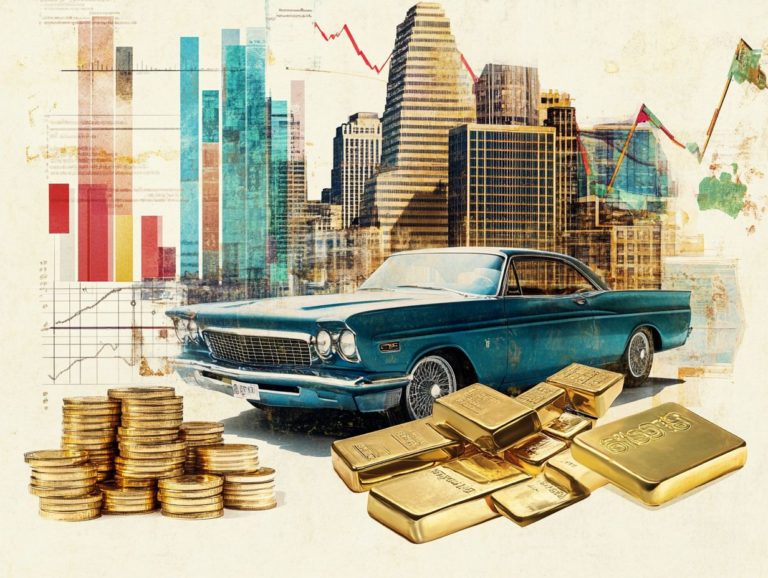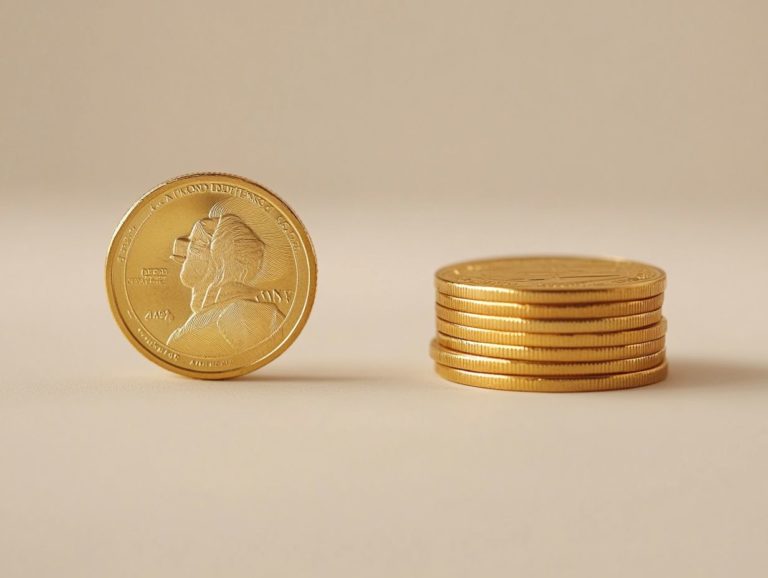Physical vs. Paper: Which Has Better Returns?
In the realm of investing, your choice between physical and paper assets can profoundly influence your financial trajectory.
This article delves into the definitions and distinctions between these two asset classes, illuminating the security that physical assets provide, juxtaposed with the liquidity and diversification advantages inherent in paper assets.
It further examines critical factors you should consider when making this decision, as well as the potential returns based on historical performance and future outlooks.
Explore which investment path aligns best with your goals!
Contents
- Key Takeaways:
- Understanding Physical and Paper Assets
- Advantages of Physical Assets
- Tangible Value and Security
- Benefits of Paper Assets
- Liquidity and Diversification
- Factors to Consider When Choosing Between Physical and Paper Assets
- Risk Tolerance and Investment Goals
- Potential Returns from Physical and Paper Assets
- Frequently Asked Questions
- 1. What is the difference between physical and paper investments?
- 2. Which type of investment typically has better returns?
- 3. What are some advantages of physical investments?
- 4. Can paper investments offer similar benefits as physical investments?
- 5. Are there any downsides to physical investments?
- 6. How can I decide which type of investment is better for me?
Key Takeaways:
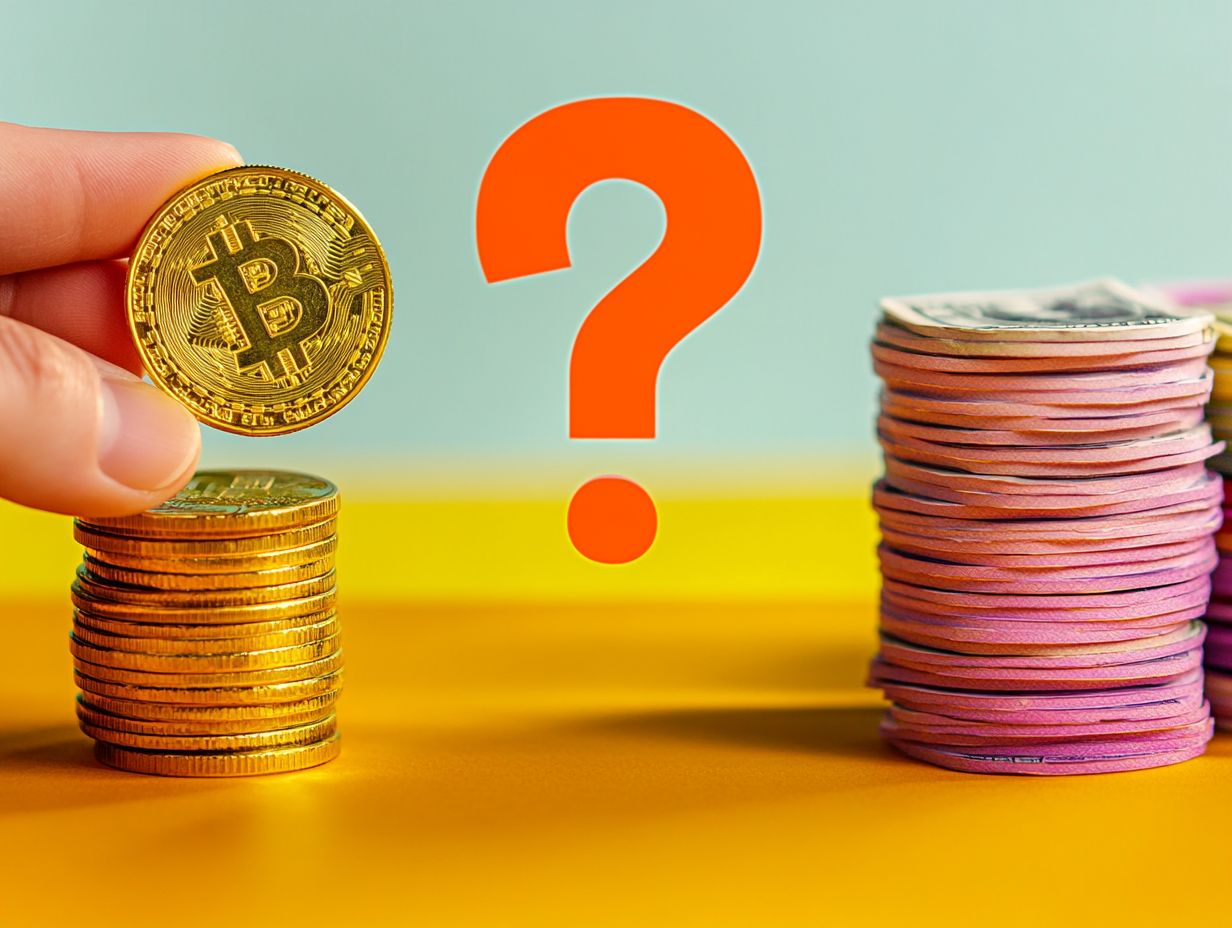
- Physical assets offer tangible value and security, making them a popular choice for risk-averse investors.
- Paper assets provide liquidity and diversification, making them a more flexible option for investors with varying investment goals.
- When deciding between physical and paper assets, consider your risk tolerance and investment goals to determine which will yield better returns for your portfolio.
Understanding Physical and Paper Assets
Understanding physical and paper assets is vital in today s investment landscape, especially within commodity markets. Physical assets like oil, gold, and wheat offer tangible value and a sense of security.
In contrast, paper trading options such as exchange-traded funds (ETFs) and futures contracts present you with a diverse range of opportunities to leverage price fluctuations and market trends.
As world events and transportation costs impact these assets, it becomes essential for you to grasp the fundamental differences and strategic implications of both types. Knowing these differences can supercharge your investment strategies!
Definitions and Differences
Physical assets are those tangible items you can touch and feel, like oil, gold, and precious metals.
On the other hand, paper assets consist of financial instruments such as ETFs and futures contracts, which represent ownership of these physical goods.
The relationship between these two asset types reveals significant differences in their characteristics and roles within commodity trading. For example, while physical assets provide direct ownership and are influenced by intrinsic value fluctuations driven by supply and demand, paper assets often come with the chance you might not be able to quickly sell your assets due to their dependence on market sentiment and prevailing conditions. Understanding these differences can help investors decide by exploring physical vs. paper silver options.
Price fluctuations can happen in the blink of an eye, often swayed by world events or economic shifts, and these changes can impact both asset types in distinct ways. Recognizing these nuances is essential for you as a trader navigating the complexities of the marketplace, allowing you to craft strategies that effectively balance the inherent risks tied to each asset class.
Advantages of Physical Assets
The advantages of physical assets are numerous, primarily stemming from their intrinsic properties that offer security to you as an investor. Assets like gold or agricultural products, such as wheat, not only maintain their worth but also act as a hedge against inflation and market volatility.
While engaging in physical commodity trading, you ll need to consider transportation and storage logistics. But rest assured that quality control measures are in place to help you effectively manage your portfolio.
This helps reduce risks from price changes and world events, leading to a more stable investment.
Tangible Value and Security

Tangible value and security are key reasons to consider physical assets over paper trading options.
This choice highlights the stability of commodities like gold and oil. These assets hold intrinsic value and often show less drastic price changes compared to stocks or bonds.
During economic uncertainty, such assets act as safe havens for those seeking protection from inflation and currency depreciation. Gold, known for its reliability, will protect you from the volatility of financial markets. Similarly, oil maintains its demand even amid global market crises.
By adding these physical assets to your portfolio, you create a sense of stability and shield your wealth against economic downturns and unpredictable price movements.
Benefits of Paper Assets
The primary benefits of paper assets include their liquidity (the ability to quickly buy or sell without affecting price) and capability for diversification, appealing to many investors.
Unlike physical assets, which often incur transportation costs and storage fees, paper trading options such as exchange-traded funds (ETFs) and futures contracts enable fast transactions. They also offer access to various markets without the complexities related to physical goods.
This flexibility is especially valuable during volatile market conditions, which can be influenced by geopolitical events or changes in market sentiment.
Liquidity and Diversification
Liquidity and diversification are vital features of paper assets, making them attractive for investors wanting to optimize their portfolios.
These qualities enhance your portfolio’s performance and empower you to respond quickly to market shifts. Liquidity guarantees that you can buy or sell assets easily, helping you avoid losses during urgent market changes.
By including a diverse array of paper assets, such as stocks and bonds, you can spread your risks across sectors. This cushions the impact of any negative price movements.
This strategy not only protects your capital but also positions you to seize emerging opportunities, allowing for a balanced approach even during volatility.
Factors to Consider When Choosing Between Physical and Paper Assets
When deciding between physical and paper assets, consider various factors like your risk tolerance (your ability to handle losses) and investment objectives.
Your understanding of your risk profile significantly influences your decisions in a market characterized by price fluctuations and evolving trends.
If you lean towards physical commodity trading, it may appeal to you as a hedge against inflation. However, the future of investing in paper assets might be more desirable if you prioritize liquidity and flexibility to adapt to changing market conditions.
Risk Tolerance and Investment Goals
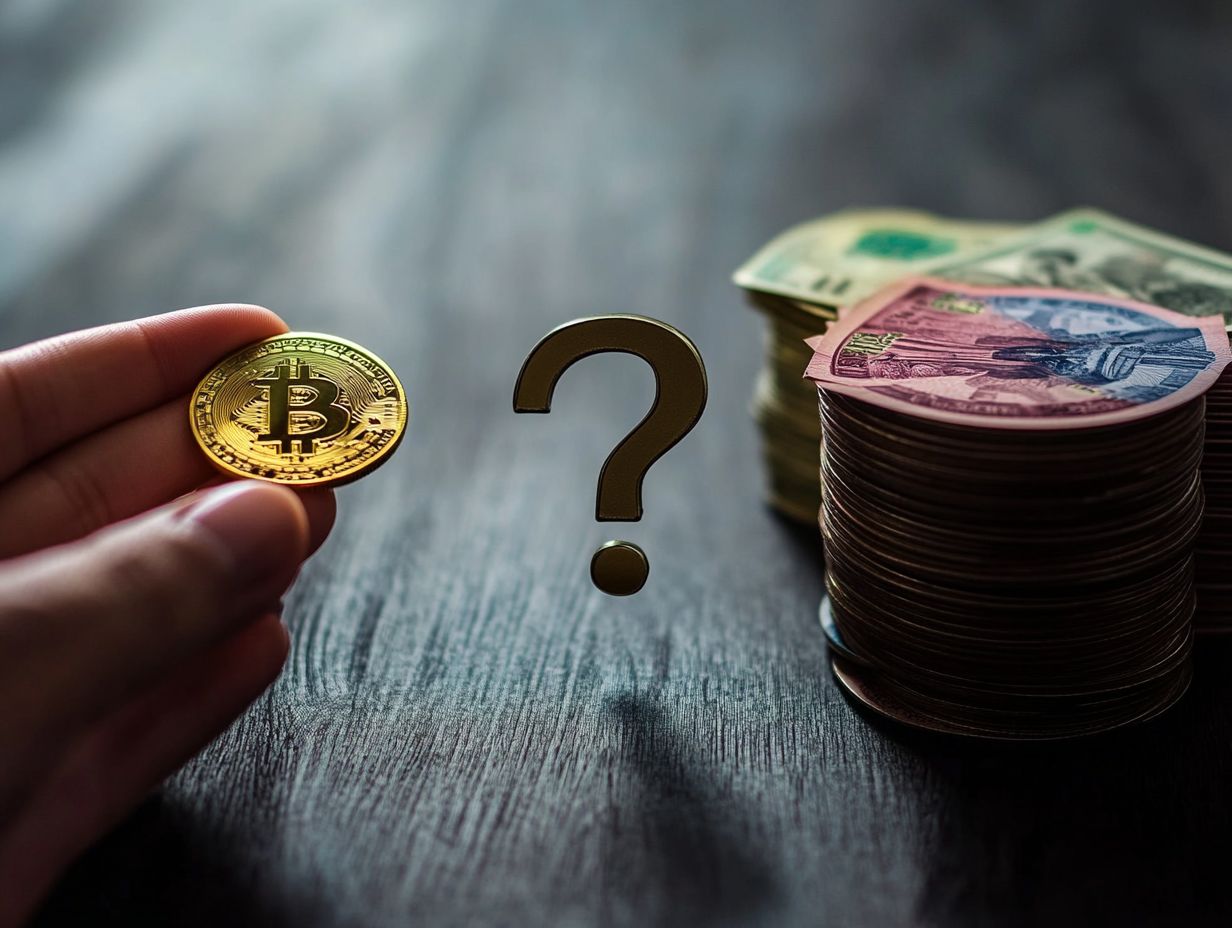
Risk tolerance and investment goals are crucial factors to evaluate when choosing between physical and paper assets.
Understanding your risk tolerance shapes your investment strategies and influences your choices regarding tangible assets like real estate and commodities, as well as paper trading options such as stocks.
If you identify as a conservative investor, stable tangible assets may attract you. On the other hand, if you’re a risk-seeker, you may be drawn to the thrilling ups and downs of the stock market.
Market sentiment significantly affects these strategies. In optimistic periods, many investors are more willing to take risks, increasing demand in paper markets. Conversely, during bearish trends, even those with higher risk tolerance may switch to safer, physical investments to protect their capital.
Don t miss out on evaluating your current investment strategy! Consult a financial advisor today to align your investments with your goals.
Potential Returns from Physical and Paper Assets
The potential returns from physical and paper assets are influenced by their historical performance and future projections. This information helps you make informed investment choices.
Physical assets, like gold and oil, are often seen as safe investments during economic uncertainty. In contrast, paper assets such as futures markets and exchange-traded funds (ETFs) can offer significant gains in fast-changing markets.
Understanding these potential returns is key to creating effective trading strategies that fit your financial goals.
Historical Performance and Future Projections
The historical performance of these assets lays a strong foundation for understanding their potential future projections.
By analyzing significant price trends, you can gain insights into how assets respond to geopolitical events like conflicts or trade agreements. For example, gold prices often surge during economic uncertainty, showing its role as a safe investment.
Stock market performance also fluctuates following key elections or trade agreements. These changes reveal the volatility and investor sentiment that impact these markets. Recognizing these patterns helps you anticipate future reactions and informs your strategic investment decisions.
Frequently Asked Questions
1. What is the difference between physical and paper investments?
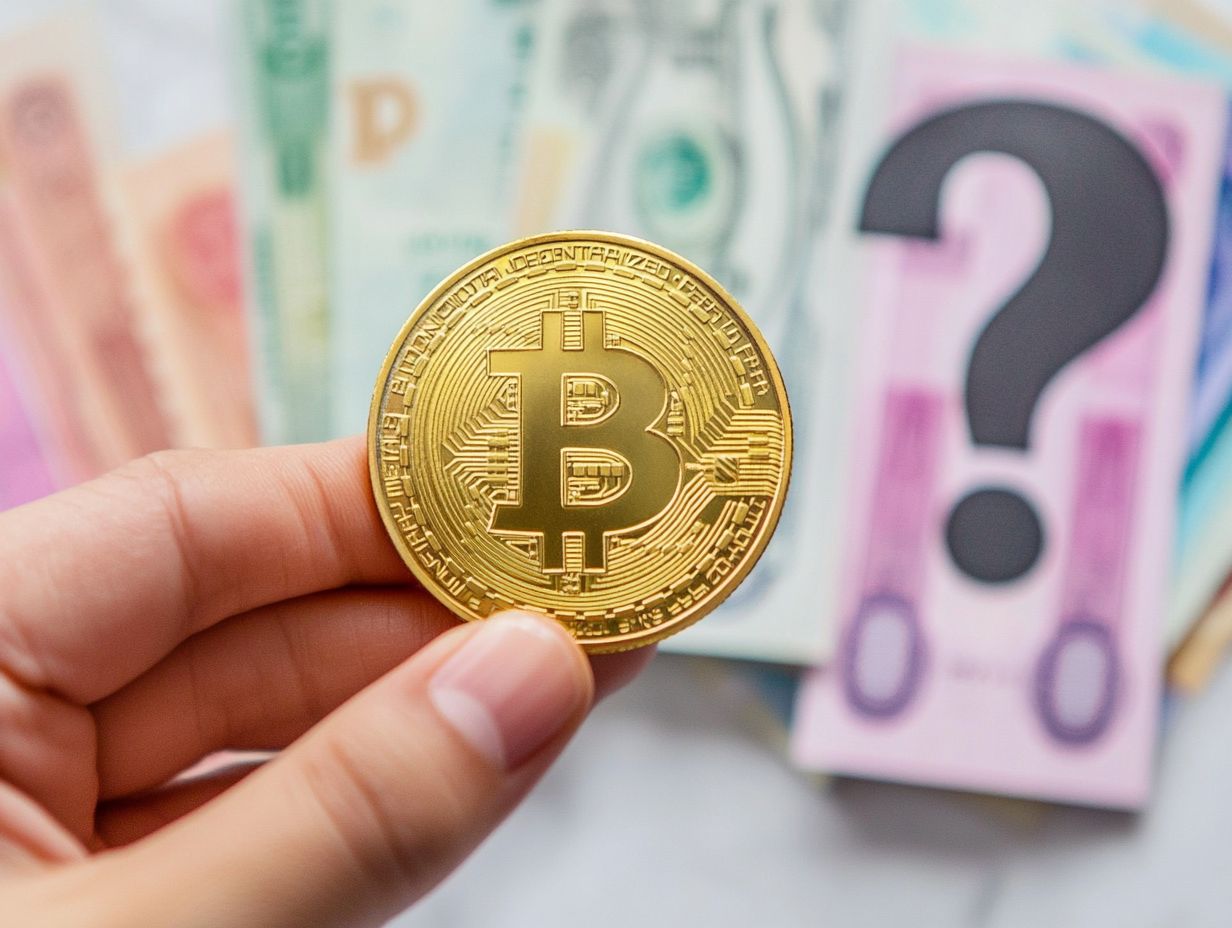
Physical investments refer to tangible assets such as real estate, precious metals, or collectibles. Paper investments include securities like stocks, bonds, and mutual funds.
2. Which type of investment typically has better returns?
It depends on market conditions, but historically, paper investments generally yield higher returns than physical investments.
3. What are some advantages of physical investments?
Physical investments offer security and stability, as they are tangible. They may appreciate over time and can protect against inflation.
4. Can paper investments offer similar benefits as physical investments?
While not tangible, paper investments provide diversification, growth potential, and inflation protection. They are also easier to trade and more liquid.
5. Are there any downsides to physical investments?
Physical investments may have high transaction costs, such as maintenance fees for real estate or storage fees for metals. They might not offer quick liquidity if you need to sell fast.
6. How can I decide which type of investment is better for me?
Consider your financial goals, risk tolerance, and time horizon. A diversified portfolio with both asset types can be beneficial.












